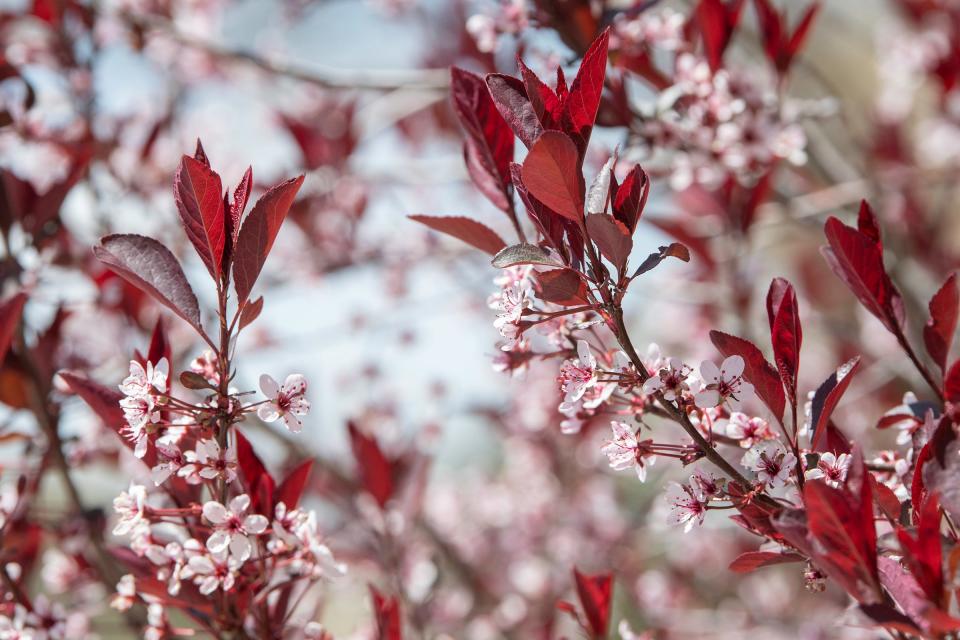Here's what to know about allergy season in Pueblo and how to manage your symptoms
Spring is in full effect in Pueblo and other parts of Colorado, bringing warmer weather and longer days. But for those who suffer from seasonal allergies, it can also bring an onslaught of symptoms that are difficult to manage.
Around one in four American adults has a seasonal allergy, according to the Centers for Disease Control and Prevention. Allergy season started earlier this year and could last longer, compounding the struggle for millions of Americans who must navigate its effects.
Though Pueblo won’t top any lists of cities that are most challenging to live in for people with seasonal allergies, its climate does make navigating them an obstacle.
“In Pueblo, we’re in an environment where we’re exposed to a lot of wind, heat and dryness,” said Dr. Dennard Ellison, an ear, nose and throat physician with UCHealth Parkview’s ENT department with 37 years of experience as an ENT. “Those three environmental situations possess the perfect storm for allergies to be at their worst.”
Here’s what to know about allergy season in Pueblo and what you can do to prevent and address your symptoms.

Pueblo climate provides ‘perfect recipe’ for pollen to thrive
Allergens are the main culprits that cause allergies. Once a person breathes them in, their immune system reacts to that substance, thus causing symptoms such as a runny nose, sneezing, or itchy eyes, Ellison said.
Some examples of allergens are tree and grass pollen, ragweed and mold. The first two are the most common and are most prevalent during spring and summer, Ellison said, but that can change in the fall when ragweed might be the more active culprit.
In Pueblo, warmer weather mixed with wind and a drier climate can offer those allergens a better opportunity to move around and infiltrate homes. Pueblo's spacious areas and proximity to mountain ranges tend to produce wind gusts that contribute to the movement of pollen, Ellison said.
“When there’s a lot of wind outside and it’s hot and dry, that’s the perfect recipe for allergens and pollen presence to be at their worst,” Ellison said.
Pueblo is in an area where pollen counts can be at their highest during the spring season. Denver and Colorado Springs had some of the highest pollen counts the first week of April, according to one pollen forecast.
Some ways to combat seasonal allergies are to be more aware of pollen counts in Pueblo and minimize exposure to allergens, Ellison said. The end of allergy season can differ for each individual, but Ellison expects the season could continue in Pueblo for the next three to four months.
Be mindful of when and how to minimize exposure
People can look up specific forecasts to track pollen counts and weather, but there are also other ways to reduce exposure to allergens.
One of them is to close windows and doors to diminish the potential of allergens entering a home, Ellison said. Another is to wear a mask or take an over-the-counter antihistamine if someone plans to be outside while it's hot for short or long periods.
More: 'Cult classic' white espresso among new offerings as Blackbox Cafe reopens with new owners
Other ways to reduce exposure are to do indoor exercises rather than outdoor ones, Ellison said. It’s also important to be mindful of when pollen counts are high — they tend to be higher during peak temperatures and lower when the weather cools down.
“The common theme is avoidance of those allergens,” Ellison said.
However, once a person returns home after spending time outside, they should change out of their clothes, shower and wash their hair to remove any allergens, Ellison said. They could also use a saline-based solution to rinse their nose.
How to manage your allergy symptoms
Though reducing exposure is key to preventing allergic reactions, doing so entirely can be quite difficult.
Ellison suggested over-the-counter medications such as Claritin or Zyrtec could help address any symptoms. He’s a strong advocate of the nasal rinse system, which can help flush out any pollen in and around your nose.
It’s possible that some of those medications aren't as effective as someone might hope. In those cases, Ellison suggested the allergy sufferer should consult their primary care doctor to determine what other steps they can take to tackle any lingering symptoms.
How to know if it's just seasonal allergies or something else
At times, it can be difficult to distinguish whether symptoms such as a runny nose and sneezing are caused by seasonal allergies or a common cold, Ellison said. To better determine the cause, he suggested a person should track and try to remember when their symptoms started.
For example, if symptoms began shortly after someone visited a grassy area with several trees, it's possible pollen was the root cause. A common cold could occur at any time and usually lasts no more than three to five days, Ellison said.
If symptoms persist for longer than that, Ellison suggests a person should consult their primary care doctor.
In some cases, patients may have allergies in connection with an underlying sinus issue, though they also could be independent of one another. The symptoms of both can be similar and may require help from a medical professional to delineate whether it’s both or one or the other, Ellison said.
Chieftain reporter Josué Perez can be reached at JHPerez@gannett.com. Follow him on X, formerly Twitter, at @josuepwrites. Support local news, subscribe to The Pueblo Chieftain at subscribe.chieftain.com.
This article originally appeared on The Pueblo Chieftain: What to know about 2024 allergy season in Pueblo, Colorado

